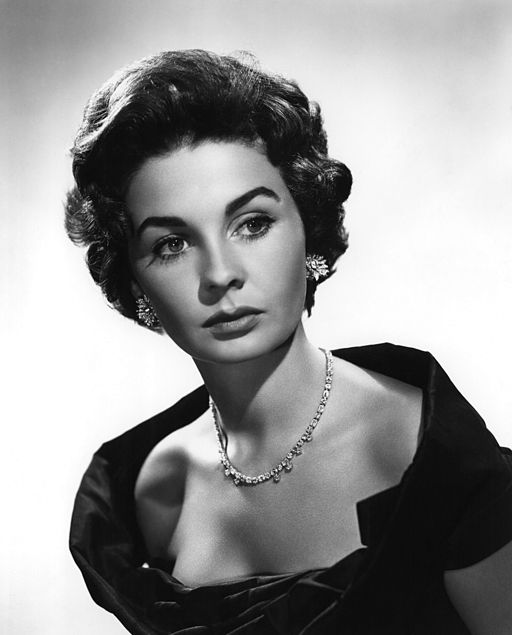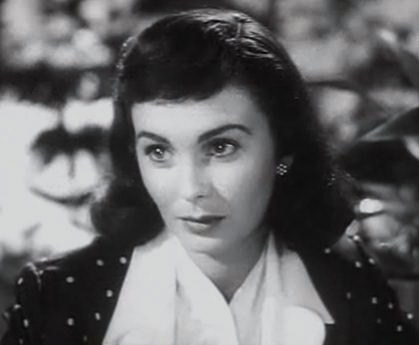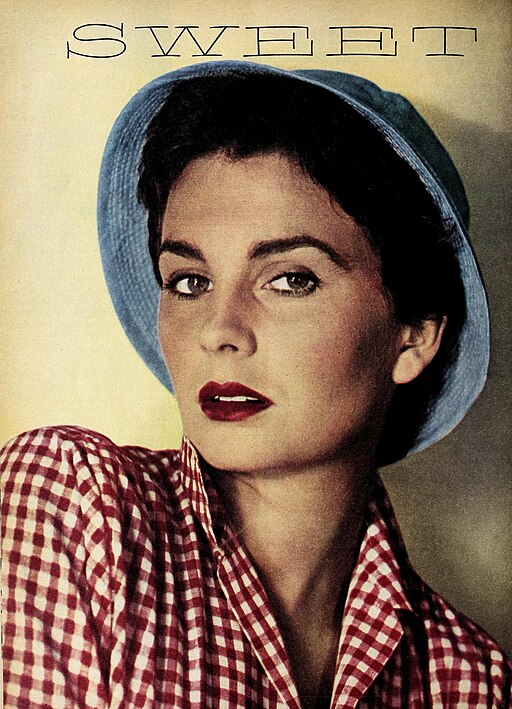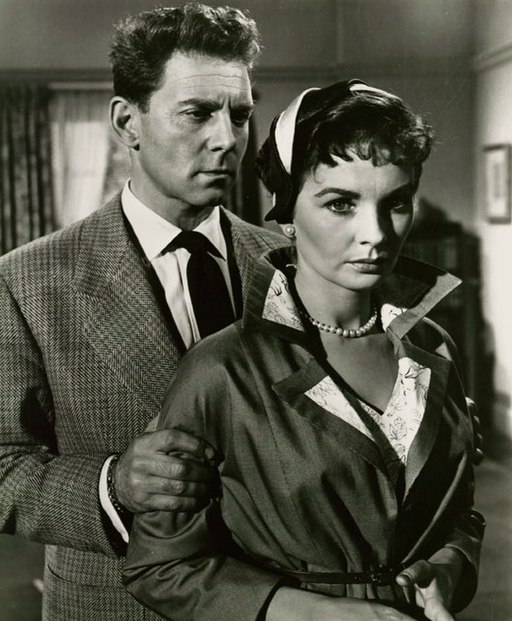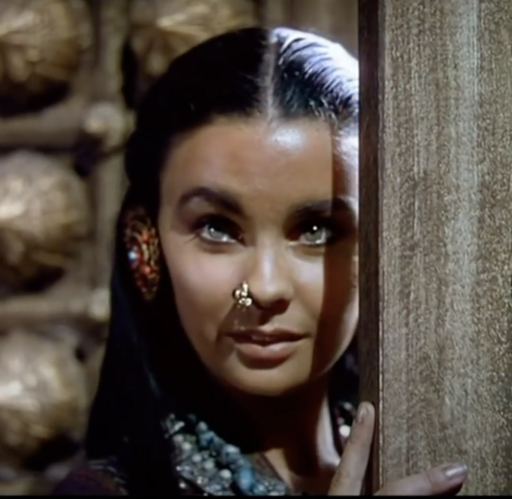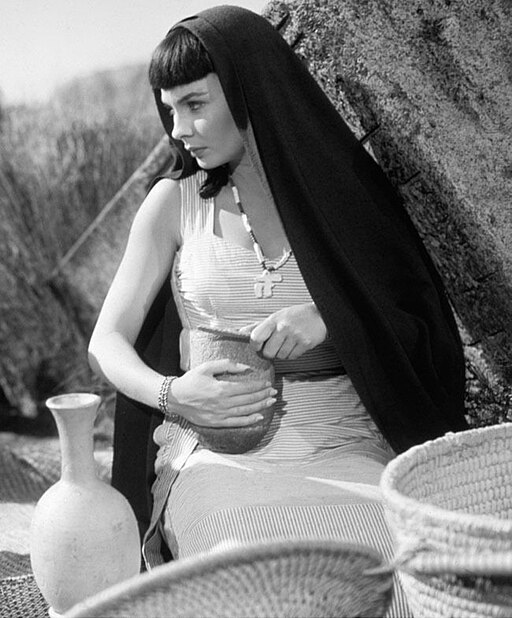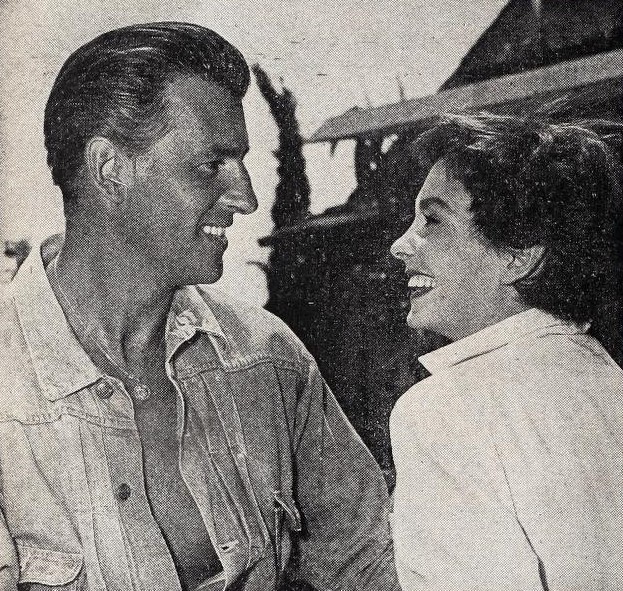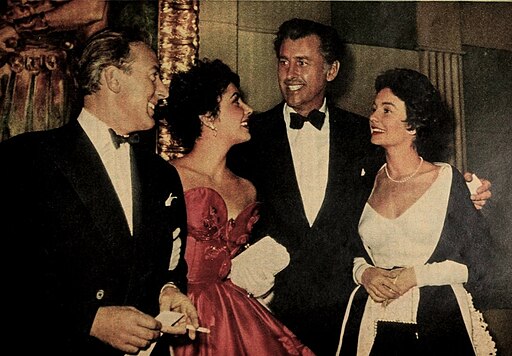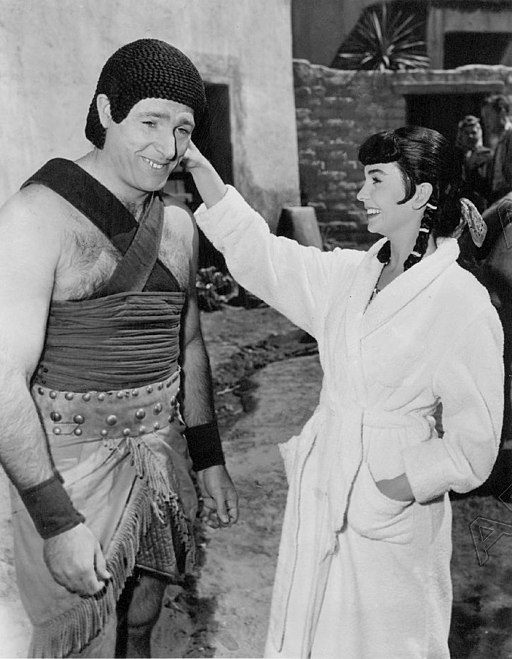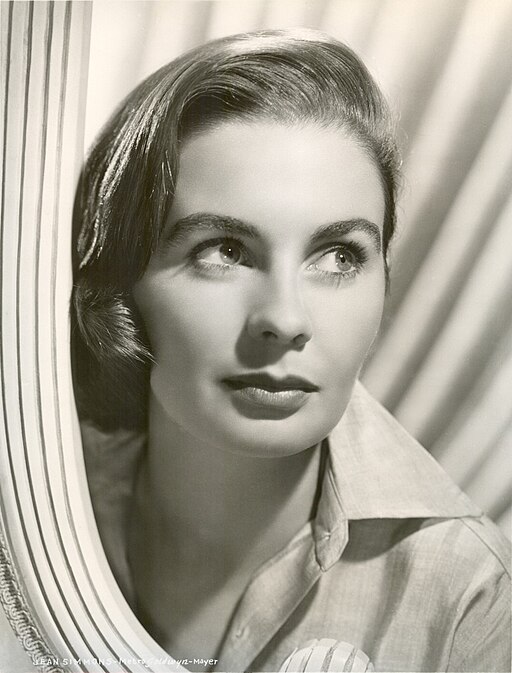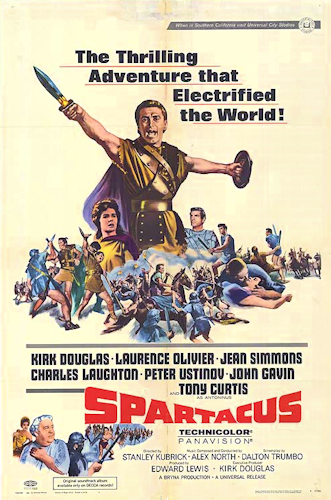Jean Simmons
back| Full Name | Jean Merilyn Simmons |
| Stage Name | Jean Simmons |
| Born | January 31, 1929 |
| Birthplace | Lower Holloway, London, England |
| Died | January 22, 2010 |
| Buried | Highgate Cemetery, North London, England |
| Married to | Stewart Granger (1950 -1960) - Richard Brooks (1960 - 1977) |
| Children | Tracy Granger (born in 1956) - Kate Brooks (adopted) |
| Notable films | Great Expectations (1946) - Hamlet (1948) - The Robe (1953) - Guys and Dolls (1955) - Elmer Gantry (1960) - Spartacus (1960) |
Jean Simmons
The Graceful Chameleon of the Silver Screen
Jean Simmons was known for her versatility as an actress, capable of performing in a wide range of genres, from Shakespearean dramas to musicals.
Her luminous screen presence and ability to convey depth of emotion made her a favorite among audiences and critics alike. Her performances were often marked by a combination of strength and vulnerability. She continued to act into her later years, transitioning into television and taking on roles in mini-series and TV movies.
Simmons' career spanned from the golden age of Hollywood through to more contemporary times, showcasing her versatility and adaptability.
Related
Jean Simmons
Biography, Analysis and all her Movies
Early Years
- Birth and Family: Jean Merilyn Simmons was born on January 31, 1929, in Lower Holloway, London, England. Her father, Charles Simmons, was a gymnastics instructor, and her mother, Winifred Ada (née Loveland) Simmons, was a homemaker. Jean had an older brother named Edward.
- Early Interest in Acting: Jean's interest in acting emerged early in her life. She attended the Aida Foster School of Dance in Golders Green, which set her on the path to a performing arts career.
Path to Success
- Early Career: Simmons's film career began in earnest when she was spotted by a talent scout at a dance school recital. Her first notable film role was in "Give Us the Moon" (1944).
- Breakthrough: Her breakthrough role came with the 1946 adaptation of "Great Expectations," where she played the young Estella. Her performance in "Hamlet" (1948), opposite Laurence Olivier, earned her significant acclaim and an Academy Award nomination for Best Supporting Actress.
- Move to Hollywood: Following her success in British cinema, Simmons moved to Hollywood in the 1950s, where she continued to build her career. She became a sought-after actress in Hollywood, known for her versatility and range.
Personal Life
- Marriages and Children: Simmons was married twice. Her first marriage was to the actor Stewart Granger in 1950, with whom she had a daughter, Tracy Granger. The couple divorced in 1960. Her second marriage was to the American film director Richard Brooks in 1960, with whom she adopted a daughter named Kate. This marriage also ended in divorce in 1977.
- Passions and Interests: Beyond acting, Simmons was known for her love of gardening and painting. She was also a dedicated mother and deeply involved in her daughters' lives.
Later Career and Death
- Later Career: Throughout the 1960s and beyond, Simmons continued to work in both film and television, adapting to more mature roles as she aged. She received critical acclaim for her performances in various TV series and mini-series, showing her range and adaptability as an actress.
- Death: Jean Simmons passed away on January 22, 2010, at the age of 80. The cause of her death was reported as lung cancer. She had been battling the disease for some time before her death.
- Legacy: Jean Simmons left behind a rich legacy as a versatile and talented actress, remembered for her classic beauty, emotional depth, and the wide range of characters she portrayed. Her performances in both British and American cinema made her a memorable figure in the history of film.
Analysis of the Acting Style of Jean Simmons:
Jean Simmons' acting style was marked by a combination of natural elegance, emotional depth, and a remarkable ability to convey complex emotions with subtlety. Her performances were often characterized by the following elements:
- Versatility and Range: Simmons was capable of performing a wide range of roles, from Shakespearean characters to romantic leads and dramatic roles. Her ability to adapt to different genres and styles is a testament to her versatility as an actress.
- Subtlety and Nuance: Simmons had a talent for portraying characters with a subtle depth. Her performances often conveyed the internal struggles and emotions of her characters without over-dramatization. This subtlety made her characters feel real and relatable.
- Emotional Depth: One of the hallmarks of Simmons' acting was her ability to convey deep emotional states. Whether portraying love, despair, innocence, or betrayal, she brought a level of authenticity and depth to her characters that resonated with audiences.
- Classic Beauty and Screen Presence: Simmons possessed a classic Hollywood beauty, which she used to her advantage in her roles. However, she never relied solely on her looks; her screen presence was also about the emotional intensity and intelligence she brought to her characters.
- Strength and Vulnerability: Many of her roles showcased a combination of strength and vulnerability. She had the capacity to play strong, independent women, while also revealing their inner vulnerabilities and complexities.
- Grace and Poise: Simmons often brought a sense of grace and poise to her roles, which was particularly evident in her performances in period dramas and romances. This grace was not just in her physical movements but also in her speech and the way she carried herself on screen.
- Adaptability in Later Career: As her career progressed, Simmons seamlessly transitioned into more mature roles. She adapted her style to fit these roles, showing her range as an actress and her ability to evolve with time.
Jean Simmons' acting style was a blend of technical skill and genuine emotive expression. She had the rare ability to draw audiences into the world of her characters, making them care deeply about the stories being told. Her performances have left a lasting impact on the film industry and continue to be appreciated by audiences and critics alike.
Short Video on the Life of Jean Simmons:
On this YouTube video you get an impression of her career and personal life:
Memorable Quotes from Jean Simmons:
On Acting and Success: "Acting is just a matter of fooling around with shoes and clothes and making faces, but it's very satisfying to be able to make a fool of yourself and still get paid for it."
Regarding Hollywood: "Hollywood was a very strange world to me. You go in through a little gate with a guard behind it. Everyone is looking at you, to see how you are behaving."
On Personal Growth: "As one goes through life, one learns that if you don't paddle your own canoe, you don't move."
Reflecting on Age and Beauty: "You know, when you see yourself on a big screen, you look at your nostrils. I mean, I don't find myself attractive at all as a screen object; I cannot bear my face."
On Life Challenges: "I have a lot of resilience. I have had so many doors shut in my face, and I just go to the next door or I make a door."
About Her Approach to Roles: "I've never been particularly aware of my age. It's like being on a bicycle - I just put my foot down and keep going."
On Hollywood's Star System: "In the big studio movies, they tend to cast you as a character and then expect you to just keep repeating the same performance."
Impact of Jean Simmons role in “The Bule Lagoon”:
In "The Blue Lagoon," Simmons portrayed Emmeline Foster, one of two young cousins who are shipwrecked on a tropical island. The film follows their journey from childhood to adolescence and ultimately to adulthood, as they grow up isolated from the outside world. Simmons' portrayal of Emmeline was pivotal in depicting the transition from innocence to maturity, a theme central to the narrative.
Impact and Significance
- Exploration of Innocence and Maturity: "The Blue Lagoon" was ahead of its time in exploring themes of growing up, sexual awakening, and the loss of innocence in an isolated environment. Simmons' performance as Emmeline captured the essence of this transition with a nuanced sensitivity, which was quite bold for its time.
- Early Depiction of Adolescent Issues: The film was one of the earlier cinematic explorations of adolescent growth and development under unusual circumstances. Simmons’ role helped to pave the way for more open discussions and portrayals of these themes in later films.
- Influence on Future Adaptations: "The Blue Lagoon" of 1949 was the first sound film adaptation of the 1908 novel by Henry De Vere Stacpoole. The film, and particularly Simmons' role in it, influenced later adaptations, including the more well-known 1980 version starring Brooke Shields. The themes and portrayal in the 1949 version set a precedent for how the story could be adapted for the screen.
- Cultural Impact: While not as commercially successful or widely known as the 1980 remake, the 1949 version of "The Blue Lagoon" with Jean Simmons holds a place in film history for its early and delicate handling of sensitive themes. It remains a point of reference in discussions about portrayals of youth and innocence in cinema.
- Legacy in Film History: Simmons' performance in "The Blue Lagoon" contributed to her reputation as a versatile actress capable of handling complex and challenging roles. It stands as an example of her ability to bring depth and sincerity to her characters, qualities that defined her career.
In summary, Jean Simmons' role in the 1949 "The Blue Lagoon" was significant for its exploration of complex themes related to adolescence, innocence, and isolation. The film, though not as widely recognized as its later adaptation, remains an important part of Simmons' legacy and film history, showcasing her talent and the progressive nature of her film choices.
Trivia on Jean Simmons:
Fervent smoker
Jean Simmons was known to be a smoker. Her smoking habit was relatively common knowledge, especially considering the era in which she rose to fame. During the mid-20th century, smoking was much more prevalent and socially accepted in Hollywood and among celebrities than it is today.
However, it's important to note that smoking had adverse effects on her health later in life. Jean Simmons passed away from lung cancer in 2010, and while it's not appropriate to directly attribute her illness solely to smoking, it is well-established that smoking is a significant risk factor for lung cancer.
Jean Simmons and Stewart Granger:
Stewart Granger and Jean Simmons were both prominent actors in the mid-20th century, and their relationship was one of the more notable romances in Hollywood during that time.
Stewart Granger
Career: Stewart Granger, born James Lablache Stewart, was a leading English film actor, primarily known for his roles in swashbucklers and romantic leads. His career was particularly prominent in the 1940s and 1950s.
Granger was known for his handsome looks and charismatic screen presence, which made him a popular leading man of his time. He starred in films like "King Solomon's Mines" (1950), "Scaramouche" (1952), and "The Prisoner of Zenda" (1952).
Their Relationship
- Marriage: Stewart Granger and Jean Simmons were married in 1950. Their marriage was considered one of the glamorous unions of the film industry at the time. Both were at the peaks of their careers and were celebrated for their acting talents.
- Collaborations: The couple appeared together in a few films, including "Adam and Evelyne" (1949) and "Footsteps in the Fog" (1955). Their on-screen chemistry often reflected their off-screen romance.
- Move to Hollywood: After their marriage, both Simmons and Granger moved to Hollywood, which marked a significant phase in their careers. This move was partly influenced by Simmons' contract with Howard Hughes, which played a role in shaping her Hollywood career.
- Divorce: Despite their initial happiness, the marriage was troubled by various pressures, including career demands and personal differences. They divorced in 1960, after a decade of marriage.
Significance of her Part in “Hamlet” for Jean Simmons’ Career:
Jean Simmons' role in the 1948 film adaptation of Shakespeare's "Hamlet" was a significant milestone in her career for several reasons:
- Critical Acclaim: Her portrayal of Ophelia in "Hamlet," directed by and starring Laurence Olivier, was highly acclaimed. This performance brought her international recognition and showcased her acting abilities on a global stage.
- Academy Award Nomination: Simmons received an Academy Award nomination for Best Supporting Actress for her role in "Hamlet." This nomination not only highlighted her talent but also significantly raised her profile in the film industry. It was a remarkable achievement, especially considering her young age at the time.
- Transition to Hollywood: The success of "Hamlet" played a crucial role in her transition from British cinema to Hollywood. Her performance caught the attention of Hollywood producers and directors, leading to a successful career in American films.
- Artistic Growth: The role of Ophelia required a deep understanding of the character's emotional depth and complexity. Simmons' ability to convey Ophelia's innocence, love, and descent into madness demonstrated her range and depth as an actress. This role was a testament to her skills and versatility and helped to establish her as a serious and capable actress.
- Influence on Later Roles: The acclaim and recognition she received for "Hamlet" opened doors to a variety of roles in both British and American films. This diversity of roles allowed her to showcase her range further and avoid being typecast.
Awards and Nominations:
Academy Awards (Oscars)
- Nominated: Best Supporting Actress for "Hamlet" (1949)
Golden Globe Awards
- Won: Best Actress in a Motion Picture – Musical or Comedy for "Guys and Dolls" (1956)
- Nominated: Best Actress in a Motion Picture – Drama for "Home Before Dark" (1959)
- Nominated: Best TV Star - Female for "Heidi" (1969)
- Nominated: Best Supporting Actress in a Series, Miniseries or Motion Picture Made for Television for "The Thorn Birds" (1984)
Primetime Emmy Awards
- Nominated: Outstanding Supporting Actress in a Miniseries or a Movie for "The Thorn Birds" (1983)
BAFTA Awards
- Nominated: Best British Actress for "The Blue Lagoon" (1950)
- Nominated: Best British Actress for "Guys and Dolls" (1956)
Other Awards and Honors
- National Board of Review: Award for Best Actress for "Home Before Dark" (1958)
- San Sebastian International Film Festival: Best Actress for "This Could Be the Night" (1957)
- Berlin International Film Festival: Silver Bear for Best Actress for "Guys and Dolls" (1955)
Star on the Hollywood Walk of Fame
- Simmons received a star on the Hollywood Walk of Fame in 1960 for her contributions to the motion picture industry.
Movies featuring Jean Simmons:
1940s
- 1944, "Mr. Emmanuel": A drama about an elderly Jewish man who travels to Nazi Germany to find a missing relative.
- 1944, "Give Us the Moon": A light comedy set in a post-war Britain, focused on the antics of a group of idle young people.
- 1945, "Meet Sexton Blake": In this crime film, Simmons plays a minor role in the story of the famous detective, Sexton Blake.
- 1945, "The Way to the Stars": A war drama about the life of the British and American airmen stationed at a British airfield during WWII.
- 1946, "Great Expectations": Simmons played young Estella in this critically acclaimed adaptation of Charles Dickens's novel.
- 1948, "Hamlet": As Ophelia, Simmons starred in this Laurence Olivier-directed adaptation of Shakespeare's tragedy.
- 1948, "The Blue Lagoon": A romance and adventure film about two children shipwrecked on a tropical island.
- 1948, "Uncle Silas": A gothic mystery film where Simmons played an heiress dealing with her menacing uncle.
- 1949, "Adam and Evelyne": A romantic comedy where Simmons's character falls in love with a gambler posing as her father.
1950s
- 1950, "Cage of Gold": A drama about a woman who remarries after believing her first husband to be dead.
- 1950, "So Long at the Fair": A thriller set against the backdrop of the 1889 Paris Exposition.
- 1950, "Trio": An anthology film featuring three Somerset Maugham stories, with Simmons in one of them.
- 1952, "Androcles and the Lion": A film adaptation of the George Bernard Shaw play about a Christian in Roman times.
- 1952, "Angel Face": A film noir where Simmons plays a femme fatale involved in a murder plot.
- 1953, "The Robe": A biblical epic where Simmons played Diana, the love interest of the main character.
- 1953, "Affair with a Stranger": A romantic drama about the ups and downs in the marriage of a playwright and his wife.
- 1953, "Young Bess": A historical drama where Simmons portrayed a young Queen Elizabeth I.
- 1954, "The Actress": A film about a young girl aspiring to be an actress, against her father's wishes.
- 1954, "Demetrius and the Gladiators": A sequel to "The Robe," continuing the story of early Christianity in Rome.
- 1955, "Footsteps in the Fog": A Victorian-era thriller featuring Simmons as a maid who blackmails her employer after witnessing him commit a murder.
- 1955, "Guys and Dolls": A musical film where Simmons played the role of Sarah Brown opposite Marlon Brando and Frank Sinatra.
- 1956, "Hilda Crane": A drama about a woman returning to her hometown after two failed marriages.
- 1957, "This Could Be the Night": A romantic comedy about a schoolteacher who takes a job as a secretary for a nightclub owner.
- 1957, "Until They Sail": A drama about four sisters in New Zealand during World War II.
- 1958, "Home Before Dark": A film about a woman recovering from a mental breakdown and struggling to reassert her independence.
- 1958, "The Big Country": A western epic, where Simmons played a headstrong schoolteacher caught in a family feud.
- 1959, "This Earth Is Mine": A drama set in California's wine country, dealing with family conflicts and love.
1960s
- 1960, "Elmer Gantry": Simmons played a pious evangelist opposite Burt Lancaster in this drama about a charismatic con man.
- 1960, "Spartacus": In this epic historical drama, Simmons played Varinia, the love interest of Kirk Douglas's Spartacus.
- 1960, "The Grass Is Greener": A comedy about a British earl whose wife has an affair with an American millionaire.
- 1963, "All the Way Home": A drama about a woman dealing with the sudden death of her husband.
- 1964, "Life at the Top": A drama sequel to "Room at the Top," about a man's struggle with his conscience.
- 1967, "Divorce American Style": A comedy about a couple going through a divorce.
- 1967, "Rough Night in Jericho": A western where Simmons plays a woman standing up to a corrupt town boss.
- 1969, "The Happy Ending": A drama about a middle-aged woman confronting her alcoholism and marital issues.
1970s and Beyond
- 1970, "Say Hello to Yesterday": A romantic drama about a day in the life of a woman having an affair with a younger man.
- 1975, "Mr. Sycamore": A quirky film about a man who decides to become a tree.
- 1985, "Lace" (TV Movie): A drama where Simmons played a wealthy and manipulative woman.
- 1988, "The Dawning": A drama set in Ireland during the 1920s.
- 1995, "How to Make an American Quilt": A generational drama where Simmons played one of the older quilters.

